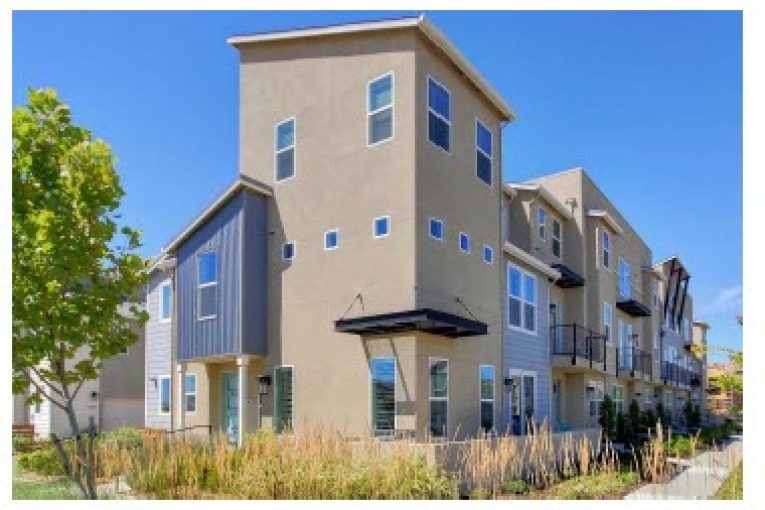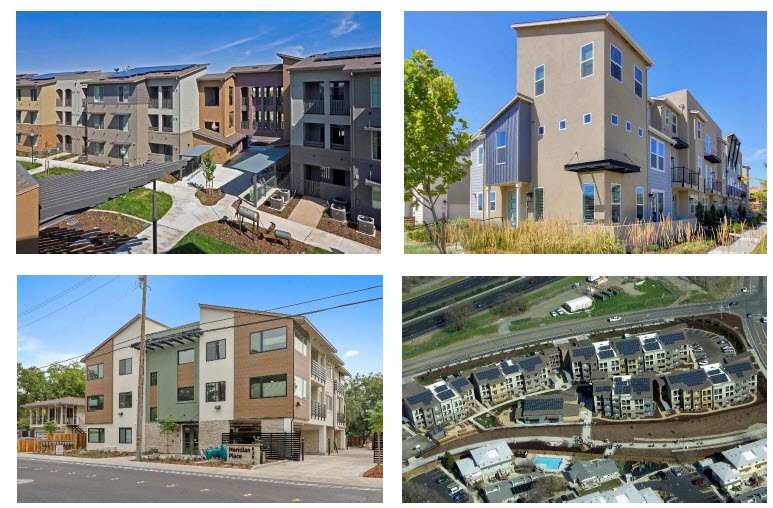

By David M. Greenwald
Davis, CA – If one good thing came out of the controversial recommendations from the Housing Element Commission it was that it awoke segments of the community to the fact that key determinations will need to be made for housing.
Two of the larger points that should be highlighted briefly are, first, that I agree with critics who argue that the Housing Element Commission itself was drawn too narrowly and therefore excluded huge portions of the community—especially on the slow growth side.
Secondly, the process largely confirmed what I have been fearing for some time—housing opportunities are limited in this community, due in part to the cost of dense infill and due in part to limitations and uncertainties from Measure J. The bigger problem in view will come in 2028 rather than now, but it is worth at least starting to have that discussion.
The Housing Element still has a ways to go. After three public meetings—one by the HEC and two by the Planning Commission, the council will hold a workshop on Tuesday, and after the July 1 comment deadline ends, the draft will go back to the Planning Commission and then the council.
If there were concerns that the council would rubber stamp some of the more controversial recommendations from the HEC, that should be dispelled by the staff report.
Let’s look briefly at three of the more controversial proposals.
The Draft Housing Element includes a provision that would “prohibit enforcement of the City’s one percent growth policy until at least January 1, 2025, consistent with SB 330, which prohibits certain limits on the number of building permits that a jurisdiction will issue.”
The key may be SB 330. But I would point out as I have before that the city, to my knowledge, has never even bumped against the one percent growth cap.
One percent growth rate would theoretically add a sizable development every other year. The problem with that theory is that it’s not clear where you would put a sizable development. You would be required to approve a major Measure J project each cycle, which seems unlikely. While the council did add a number of larger apartment complexes between 2016 and 2020, those days may well be done for the time being as well.
So are we really going to spend a lot of energy fighting over a growth cap that likely never comes into play?
Second, there is a push for more pressure on UC Davis. The HEC narrowly defeated that, however. “The Planning Commission feels that the root of the housing shortage in Davis lies with the lack of on-campus student housing.”
Here the recommended policy is: “Continue to work with UC Davis to provide housing for students. Support the provisions in the Memorandum of Understanding entered into by and between the City of Davis and UC Davis in 2018, including but not limited to the University’s commitment to provide on-campus housing for 100% of the actual student population in excess of the baseline enrollment number of 33,825 students, as defined in the 2018 Long Range Development Plan EIR.”
That was one I disagreed with from the HEC when it voted it down. I have always felt a mixed strategy of adding housing for students on campus as well as in town was better than one or the other.
I am more skeptical of putting staff and faculty housing on campus and creating a large community on campus, cut off from the city. That has the potential to be quite harmful and needs to proceed more carefully.
Finally there is a proposal to modify Measure J.
The HEC voted 8-2 to recommend that the City Council consider placing a measure on the ballot that would exempt the Wildhorse Ranch and the Mace Curve Properties from the requirement of having to subsequently be approved by a Measure D vote.
However, staff points out, “Many citizens have expressed their concern over the exclusion of these two properties from the requirements of Article 41.01. There is no recommended policy in the draft Housing Element Pertaining to the elimination…”
As many know, I have long favored a pre-approval process. I am not sure that I favor them on those properties—after all, the voters did reject a development at Wildhorse Ranch.
One point that would be made here—this would act as as a de facto Measure R vote with an EIR and project baseline features. That would probably be sufficient to establish things like: housing type, density, FAR, units, affordable housing and sustainability.
In other words, you would not have a blanket approval and open the back door for mega-dorm projects, as one person expressed concerns about.
I see it as a way to avoid the project-by-project planning and introduce more certainty. And the voters could always reject it if they think the baseline parameters are too vague.
There seems to be a lot of fear around this idea, even though the baseline features would protect against back doors and bait and switch possibilities.
It is worth mentioning then that staff has basically recommended against two of the three more controversial ideas that the HEC put forward. The Planning Commission overruled one, staff did not take up another, and only the immaterial one percent cap, which may have been overruled by state law, has come forward.
The bigger issue of course is finding places to build housing—that, I think, is a much more concerning prospect.
—David M. Greenwald reporting
Support our work – to become a sustaining at $5 – $10- $25 per month hit the link:


“The bigger issue of course is finding places to build housing—that, I think, is a much more concerning prospect.”
Too bad you supported Measure D. Now you have to live with it. Still it gives you the opportunity to regularly lament the consequences of the policy you support.
Mega Dittos, El Rushbo
Agree. The fact that there’s a perceived need to create case-by-case exceptions to Measure D just illustrates the fundamental problem with Measure D itself.
And, in your view, Eric, what is the fundamental problem with measure D? Meant as a fair question…
I see several fundamental problems, but I tend to be a “process” guy…
There are several fundamental flaws—but this situation emphasizes that Measure D is not based on overall planning needs.
Yup, people complained about the process of the commission selection at the time. Like my avatar, Barack Palin, both conservative and progressive and representing all sides of the political spectrum, the city commissions should be staffed the same way.
I suggest that the council take some time to assess whether the city’s housing element is likely to pass muster with the state housing agency. Here’s some reading material.
San Diego housing element was deemed inadequate. This has significant ramifications for many cities in California. Here is the status of that finding.
Letter from housing agency January 2020: https://hcd.ca.gov/community-development/housing-element/docs/sdisandiego01242020.pdf
Followup letter about continued inadequacies:
https://www.voiceofsandiego.org/wp-content/uploads/2021/06/HCDmay2021HousingElementLetter.pdf
Key issues (emphasis added):
San Diego city council approves minor changes in submitted plan:
https://www.kpbs.org/news/2021/jun/09/council-stands-san-diegos-housing-plan/
Where it might go from here: https://twitter.com/CSElmendorf/status/1402438564214833152
Housing Dept regulations proposed, currently out for public comment. The state agency continues to put more teeth in their housing element oversight role:
https://twitter.com/CSElmendorf/status/1402701522736082944
Background about changes in the housing element compliance regulations:
https://lesardevelopment.com/the-housing-element-and-rhna-what-you-need-to-know-really/
NAACP urged that council reject the changes. https://www.sandiegonaacp.org/2021/06/07/reject-amendments-to-the-housing-element/2/
Key issue (emphasis added):
WHY? There is no reason for the city to set a goal to house students.
Again…WHY? As I stated in my post in your previous article on this subject; UCD employees are no different than anyone that works in any other place outside of the city of Davis. The only difference now is that the city of Davis due to close proximity must provide infrastructure support these the UCD employees because they live in the city. You’re encouraging Davis into become even more of a bedroom community. Again, as I said in my previous comment; the idea that housing UCD employees in the city of Davis will be good because they’ll spend money in local businesses is flawed. A store doesn’t say: hey let’s hire (and pay) more employees so they’ll spend their money in the store. No, you want people coming from out of town to spend money in the local stores.
Eh, if the Sacramento region continues to grow at the breakneck speed it has been over the last 10 years; I’m sure that by 2040 that market pressure in the region will make higher density infill projects in Davis become economically viable for developers. So the problem will resolve itself!
Very simple… to ‘enfranchise’ more (presumably) “progressive” voters! That is the primary reason why talks of annexation of the ‘student dorms’, etc. has been pushed since the 1970’s… (maybe before, but my timeline with Davis only goes back to 1972 (yeah, a “newbie”)…
In the 70’s, some believed that students would be more likely to approve bond issues, additional taxes, that the students would either never pay, or would pay for a short time, before they moved on… ‘progressive’… not just City, but DJUSD… they pushed for dorm annexation… failure…
Now, similar, but focused more on other ‘progressive’ issues…
If new students go more ‘conservative’, I predict the annexation thingy will back off…
Why is on campus housing even being discussed? The City housing element can’t be addressed by the University. There is a jurisdictional separation. If the campus were part of the city there would be relevance but attempts to annex the campus have only been successful for faculty housing.